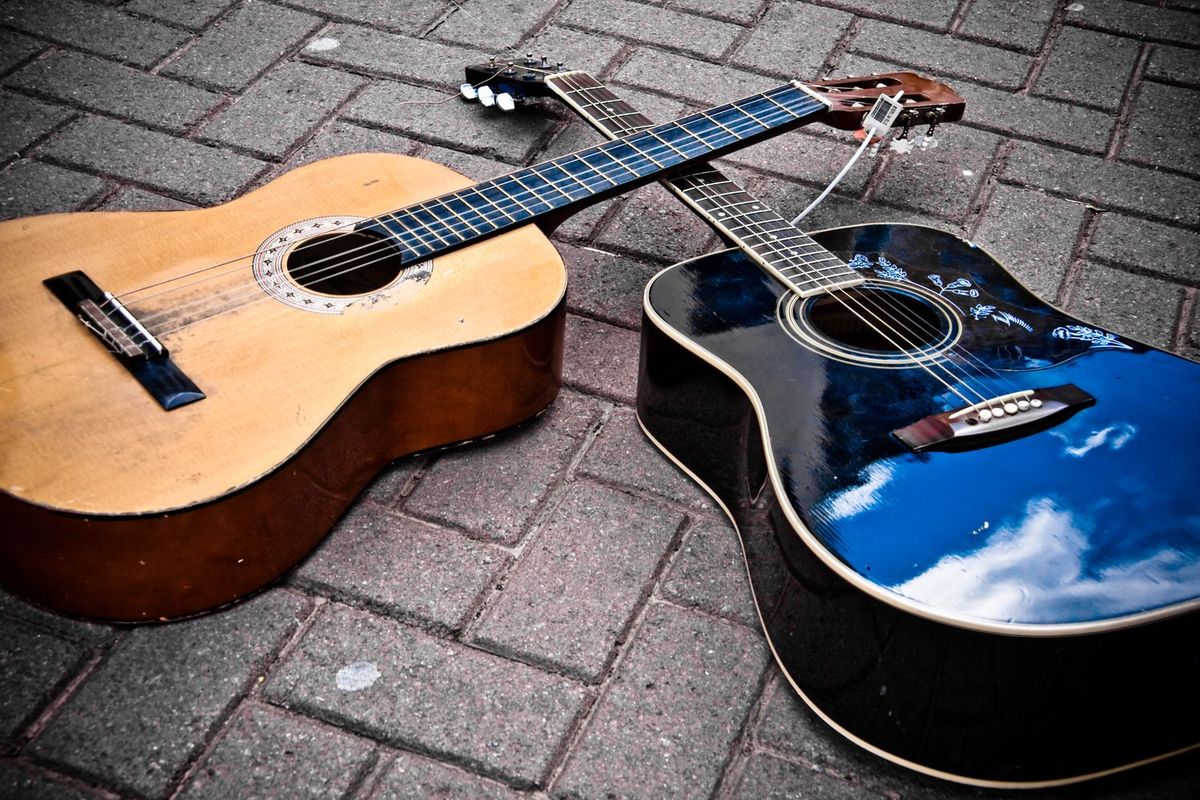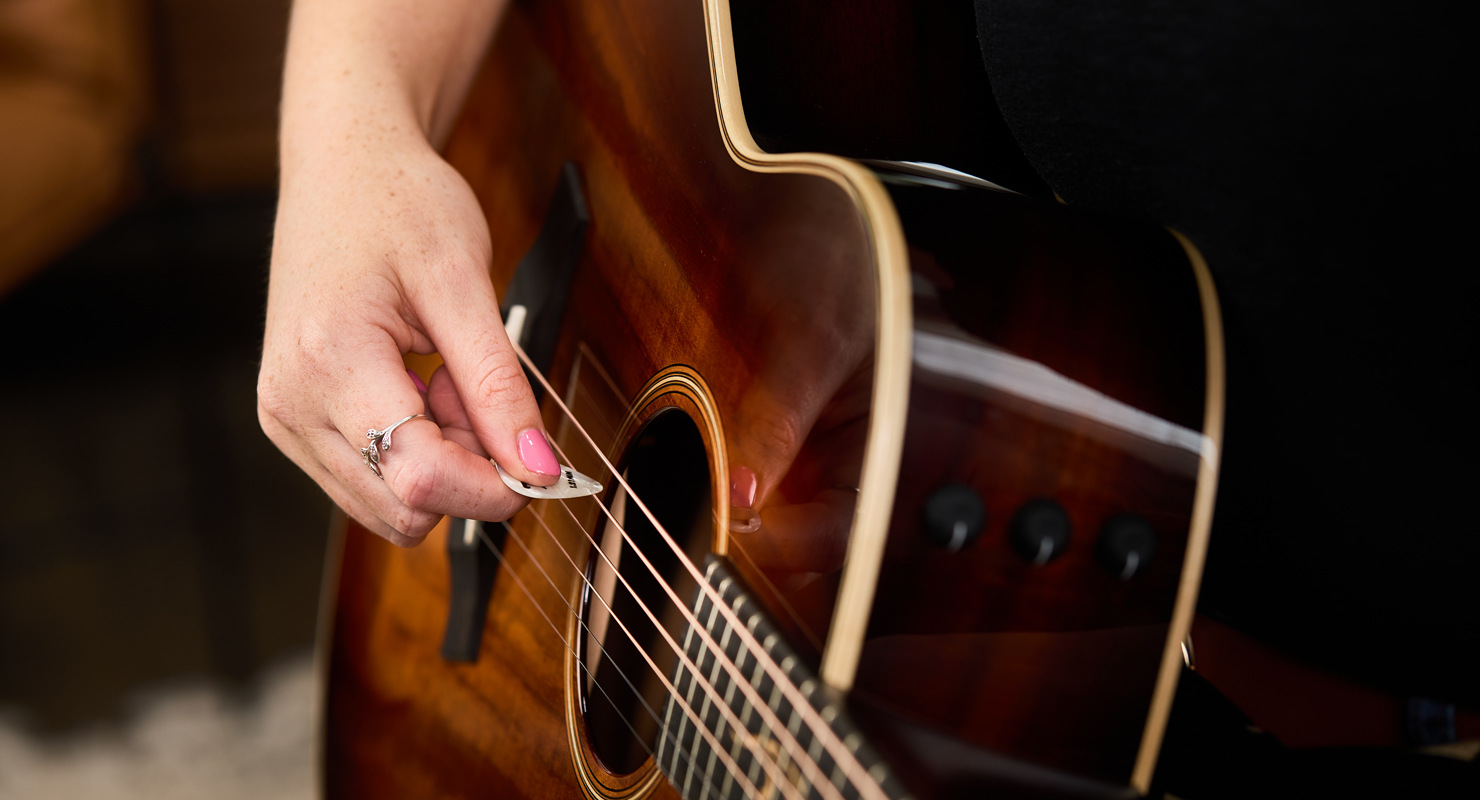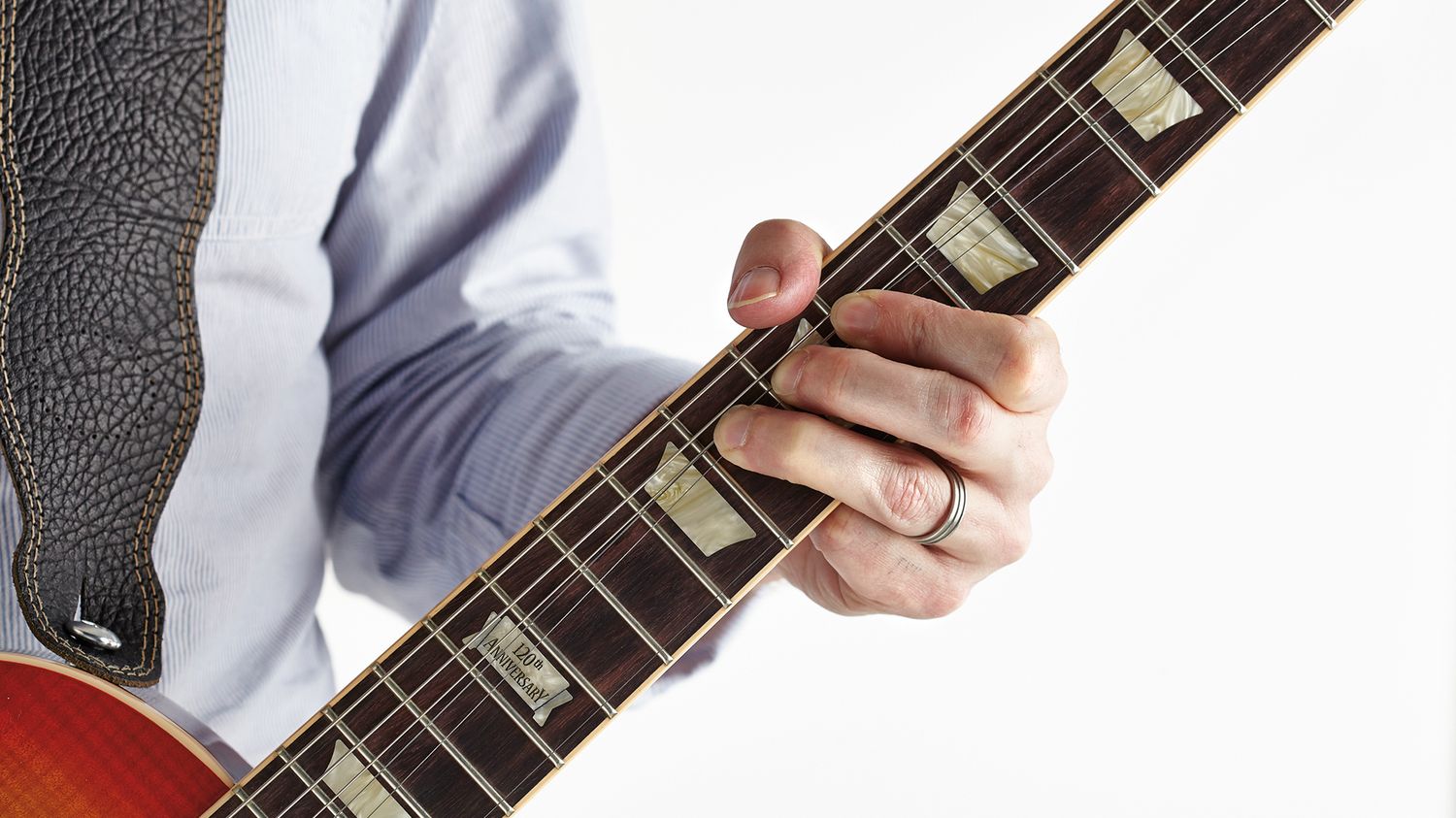Home>Instruments>Guitar>How To Ground A Guitar


Guitar
How To Ground A Guitar
Published: February 13, 2024
Learn the essential steps to properly ground your guitar for optimal performance and sound quality. Discover the importance of grounding and how to do it effectively.
(Many of the links in this article redirect to a specific reviewed product. Your purchase of these products through affiliate links helps to generate commission for AudioLover.com, at no extra cost. Learn more)
Table of Contents
Introduction
In the realm of music, the guitar stands as an iconic symbol of artistic expression and melodic creativity. Whether you're an aspiring musician or a seasoned player, understanding the technical aspects of your instrument is crucial to achieving optimal sound quality. One such technical consideration is grounding, a fundamental element that significantly impacts the performance and safety of a guitar.
Grounding a guitar involves creating a direct path for electrical interference to flow into the ground, thereby minimizing the risk of unwanted noise and potential shock hazards. This process is essential for both electric and bass guitars, as it ensures that the instrument operates at its best while safeguarding the player from electrical mishaps.
As we delve into the intricacies of grounding a guitar, we will explore the significance of this procedure, the various grounding systems, and the step-by-step process to achieve effective grounding. Additionally, we'll address common troubleshooting techniques to rectify grounding issues, empowering you to maintain your instrument in top-notch condition.
Let's embark on a journey to unravel the mysteries of grounding and equip ourselves with the knowledge to optimize the performance and safety of our beloved guitars.
Why Grounding Is Important
Grounding is a critical aspect of guitar maintenance and performance, playing a pivotal role in ensuring the instrument operates optimally. The primary purpose of grounding is to shield the player from potential electrical hazards and minimize unwanted noise interference, ultimately enhancing the overall sound quality of the guitar.
When a guitar is not properly grounded, it becomes susceptible to electrical interference, resulting in an audible hum or buzz, commonly known as “ground hum.” This unwelcome noise can detract from the purity of the guitar’s sound, particularly during quiet passages or when using high-gain settings. By establishing a solid ground connection, these disruptive noises can be effectively mitigated, allowing the true tonal characteristics of the instrument to shine through.
Furthermore, grounding serves as a safety mechanism, protecting the player from potential electric shocks. In the absence of proper grounding, a faulty electrical component within the guitar could potentially electrify the strings, putting the player at risk of injury. Through the implementation of a robust grounding system, any stray electrical currents are channeled away from the player, creating a safe playing environment.
For electric guitars, grounding is integral to the functionality of the instrument’s electronics. It provides a reference point for the circuit and shields the sensitive electronic components from external electromagnetic interference, ensuring that the signal path remains clean and free from distortion.
By understanding the importance of grounding, guitarists can proactively address potential issues, safeguard their well-being, and preserve the sonic integrity of their instruments. With a solid grounding foundation in place, the guitar can fulfill its sonic potential, allowing players to unleash their musical creativity without the hindrance of electrical disturbances.
Types of Grounding Systems
Grounding systems for guitars can vary based on the type of instrument and the specific electronics involved. Understanding the different grounding configurations is essential for implementing the most effective solution for your guitar. Here are the primary types of grounding systems commonly encountered:
- Single-Point Grounding: This system involves connecting all ground points in the guitar to a single central location, typically the back of a potentiometer or the bridge. Single-point grounding simplifies the wiring and minimizes the risk of ground loops, which can introduce unwanted noise into the signal path.
- Multi-Point Grounding: In contrast to single-point grounding, multi-point grounding involves connecting various ground points to their respective components, such as pickups, switches, and tone controls. This approach aims to reduce the likelihood of ground loops and can be especially beneficial in guitars with complex electronic configurations.
- Shielding Grounding: Shielding involves enclosing the electronic cavities and pickup routes with conductive material, such as copper foil or conductive paint, to create a shielded environment. The shield is then connected to the ground, effectively reducing electromagnetic interference and noise pickup, resulting in a quieter signal and improved overall performance.
Each grounding system offers distinct advantages and is suited to different guitar setups. While single-point grounding simplifies the wiring and minimizes potential noise, multi-point grounding provides a more comprehensive approach for complex electronic configurations. Shielding grounding, on the other hand, focuses on eliminating external interference to enhance signal integrity.
By understanding the characteristics of these grounding systems, guitarists can make informed decisions when configuring their instruments, ensuring optimal performance and minimizing potential noise and interference issues.
Steps to Ground a Guitar
Grounding a guitar involves a series of systematic steps to establish a reliable and effective grounding system. Whether you’re assembling a new instrument or troubleshooting existing grounding issues, following these steps can help ensure optimal performance and safety:
- Identify Grounding Points: Locate the grounding points within the guitar, typically including the bridge, tailpiece, and electronic components such as pots, switches, and pickups. Understanding the specific grounding points is crucial for establishing a comprehensive grounding system.
- Prepare Grounding Wires: Use high-quality, shielded grounding wires to connect the various grounding points. Ensure that the wires are of sufficient length to reach the central grounding location without strain or tension.
- Create a Central Grounding Connection: Establish a central grounding point, often located on the back of a potentiometer or a designated grounding strip within the guitar’s control cavity. All grounding wires should converge at this central location to form a unified ground connection.
- Solder Grounding Connections: Carefully solder the grounding wires to their respective grounding points, ensuring secure and reliable connections. Proper soldering techniques are essential to maintain a low-resistance path for electrical interference.
- Verify Continuity: Use a multimeter to verify continuity between the various grounding points and the central grounding connection. This step ensures that the ground circuit is intact and free from any breaks or weak connections.
- Test for Ground Loops: Once the grounding system is in place, test the guitar for potential ground loops by monitoring for unwanted noise or hum. Address any ground loop issues by adjusting the grounding configuration or utilizing isolation techniques.
- Implement Shielding (Optional): If employing shielding grounding, ensure that the shielded cavities and routes are effectively connected to the central grounding point, providing a shielded environment to minimize electromagnetic interference.
By meticulously following these steps, guitarists can establish a robust grounding system, effectively mitigating electrical interference, ensuring player safety, and optimizing the sonic performance of the instrument. Whether building a guitar from scratch or fine-tuning an existing one, proper grounding is a fundamental aspect of maintaining a reliable and high-quality instrument.
Troubleshooting Grounding Issues
Despite the meticulous implementation of grounding systems, guitarists may encounter occasional issues that compromise the effectiveness of the grounding configuration. Identifying and addressing these grounding issues is essential for maintaining the optimal performance and integrity of the instrument. Here are common troubleshooting steps to rectify grounding issues:
- Inspect Grounding Connections: Thoroughly examine the soldered grounding connections to ensure they are secure and free from any cold solder joints or loose wires. Re-solder any questionable connections to establish reliable continuity.
- Check for Ground Loops: Test the guitar for ground loops by systematically disconnecting individual components from the ground and monitoring for changes in noise levels. Identifying the source of ground loops allows for targeted isolation and resolution of the issue.
- Verify Shielding Integrity: If utilizing shielding grounding, inspect the shielding material for any breaches or incomplete coverage. Ensure that the shielded cavities and routes are effectively connected to the central grounding point to provide optimal protection against electromagnetic interference.
- Utilize Grounding Techniques: Implement additional grounding techniques, such as star grounding, where all ground points converge at a single central location, or utilize ground lift switches to isolate potential ground loops and minimize unwanted noise.
- Address Environmental Factors: Consider external factors that may contribute to grounding issues, such as proximity to electronic devices or sources of electromagnetic interference. Relocating the guitar or employing shielding materials can mitigate the impact of external influences.
- Seek Professional Assistance: If persistent grounding issues persist despite troubleshooting efforts, consulting a qualified guitar technician or luthier can provide expert insight and specialized equipment to diagnose and resolve complex grounding challenges.
By systematically addressing grounding issues through thorough inspection, targeted isolation, and strategic interventions, guitarists can restore the integrity of the grounding system, ensuring optimal performance and minimizing unwanted noise and interference. Troubleshooting grounding issues is an essential skill that empowers guitarists to maintain their instruments at peak performance, unleashing the full sonic potential of their beloved guitars.
Conclusion
Grounding is a foundational aspect of guitar maintenance, playing a pivotal role in preserving the sonic integrity and ensuring the safety of the instrument and its player. By establishing a robust grounding system, guitarists can effectively mitigate electrical interference, minimize unwanted noise, and provide a safe playing environment.
Understanding the significance of grounding, the various grounding systems, and the systematic steps to ground a guitar empowers musicians to proactively address potential issues and optimize the performance of their instruments. Whether implementing single-point grounding, multi-point grounding, or shielding grounding, the chosen configuration should align with the specific needs of the guitar setup, ensuring optimal signal integrity and noise reduction.
Furthermore, troubleshooting grounding issues equips guitarists with the skills to identify and rectify potential challenges, restoring the effectiveness of the grounding system and maintaining a high standard of performance. Through meticulous inspection, targeted isolation, and strategic interventions, grounding issues can be effectively addressed, allowing the instrument to resonate with clarity and purity.
As guitarists embark on their musical journey, the knowledge and application of grounding principles serve as a cornerstone for unlocking the full sonic potential of their beloved instruments. By embracing the art and science of grounding, musicians can revel in the rich tones and expressive capabilities of their guitars, free from the interference of electrical disturbances.
In conclusion, grounding is not merely a technical necessity but a fundamental element that harmonizes with the artistry and passion of guitar playing, enriching the musical experience and elevating the sonic landscape for players and listeners alike.










